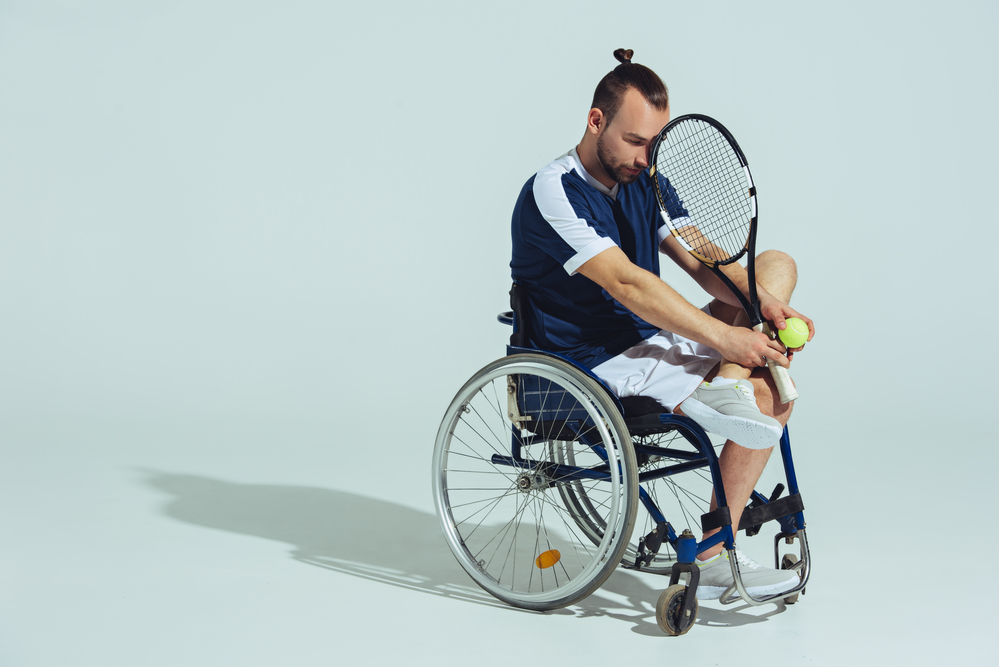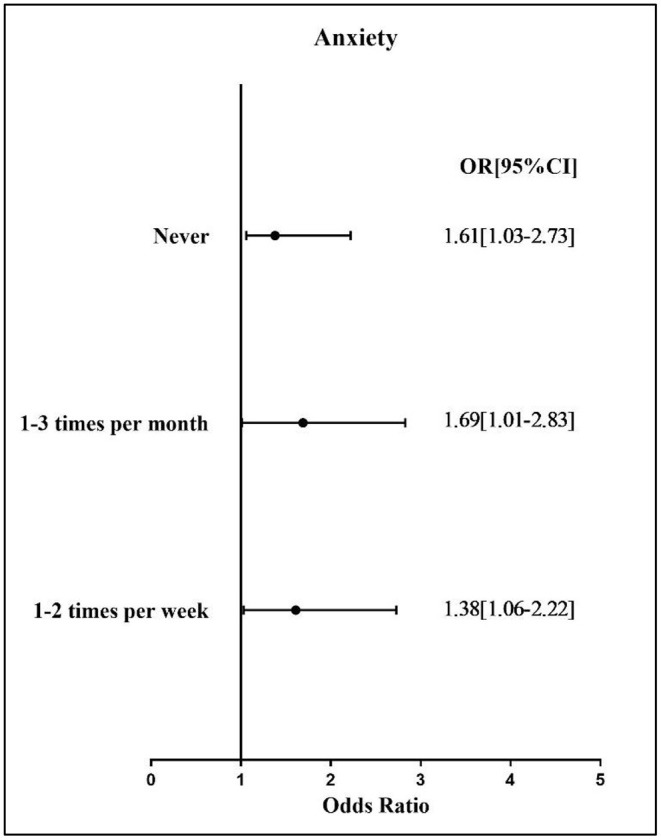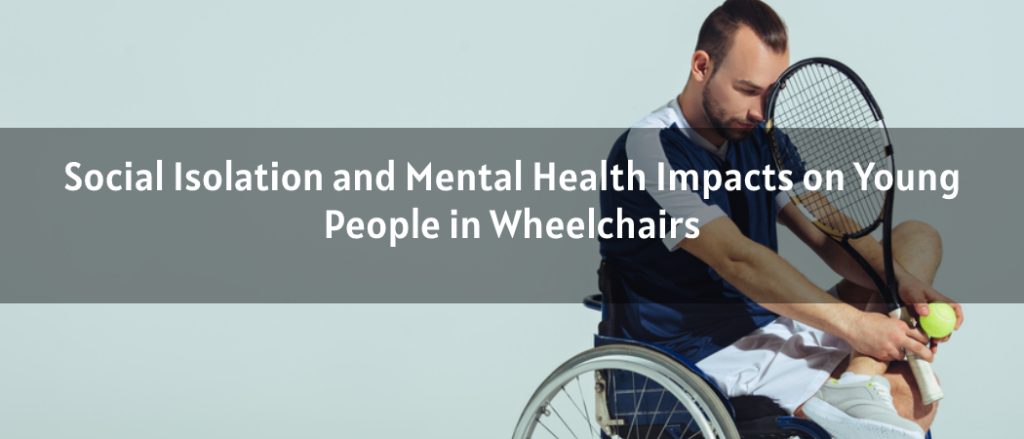We all struggle with loneliness sometimes; it tends to occur during major life transitions such as loss, retirement, and parenthood.
But especially young people with physical disabilities are likelier to feel lonely for a long time or all the time.
Even the study shows that people with disabilities are much more likely than people without disabilities to feel lonely, lack a sense of social support, and be socially isolated.
Many reasons lead to such outcomes, including a lack of accessible transportation and facilities and a social stigma that makes disabled people feel unfairly treated and discriminated against.
Also, people may need help getting into public places like restaurants, stores, and schools, making it harder for them to connect with and be a part of their community.
However, this article will focus on strategies through which wheelchair users might improve their emotional health.
Peer Understanding and Support
Living with a disability can be difficult, particularly for young wheelchair users.
However, finding individuals who understand what you’re going through may be really comforting. Young people with wheelchairs can benefit from both online and offline peer support networks.
Peer support networks provide young wheelchair users with the opportunity to learn from those who have gone through comparable situations. Effective coping strategies, advice, and emotional support can be gained from success stories, and members may chat anytime and from anywhere, creating a global feeling of community.
Jannet, an avid social media user, shares her experience. “People live in my phone,” she says. “I communicate with disabled people all over the world.” Facebook, in particular, allows her to connect with people in the disabled community and those in health groups.
Furthermore, offline and online peer support networks can be priceless assets for advocacy and activism by raising awareness of accessibility issues and advocating for change.
For example, they might advocate for better accessible infrastructure in their community or draw attention to the rights of persons with disabilities locally or nationally.
Here is a small video containing tips on communicating with others, seeking accommodations or modifications, and advocating for one’s rights and needs.
Researchers have shown that a strong social network helps people feel less anxious, happier, and more confident.
Another study published in the Journal of Medical Internet Research has found that providing community and social support for wheelchair users leads to improved mental health and well-being. They are also more accessible than in-person gatherings.
Numerous online forums and communities in the United States are popular specifically for wheelchair users. Such as
- CareCure Community: A forum where wheelchair users talk about their experiences and help one another out.
- WheelchairJunkie.com: A website with forums, blogs, and product reviews on wheelchairs and mobility aids, as well as an active online user community.
- United Spinal Association: The website offers help and advocacy to anyone who has suffered a spinal cord injury or other forms of disability. Members get access to a community forum, library of materials, and social media platform.
- The Christopher and Dana Reeve Foundation: The association advocates for spinal cord injury and other disabled people. Members can use forums, resources, and social media.
Overall, online forums can be a potent instrument for social activism among people with disabilities.
Inclusive Social Activities
Young wheelchair users can find social support from their peers in extracurricular activities like adaptive sports and recreation programs. These programs allow people to be active, socialize, and have fun.
Following are a couple of such activities and events.
Adaptive Sports
Young people who use wheelchairs can build physical abilities, social skills, and sportsmanship via participation in competitive and leisure wheelchair sports.
Wheelchair-friendly versions of popular sports, including basketball, tennis, racing, and rugby, are easily accessible.
Participation in inclusive sports like wheelchair basketball and adapted cycling has been shown in a 2023 study to improve physical health and reduce loneliness and social isolation.
According to other research, those participating in inclusive sports expanded their social circles and felt more included in society.
Even the University of California has started offering adaptive sports and recreation, which physically disabled students can access through the UCLA Adaptive Recreation Program.
Michael Johnson is a Paralympic wheelchair racer and a success story that has won many gold medals and has utilized his position to increase disability awareness as well as promote diversity and accessibility in sports.
Curious about what makes wheelchair sports so effective? See this link for the full read.

Adaptive Dance classes
Wheelchair-accessible dance lessons allow youth in wheelchairs to express themselves through movement, balance, and coordination.
Even a study of inclusive dance programs found that participants experienced increased self-esteem and more significant accomplishments.
Grey Stowe, a physically disabled girl, shared her personal experience that she had been doing ballet for three years on pointe. So, of course, that is conceivable! Yes, it was difficult, but the joy she got from it was great.
Dance companies, community centers, and non-profit organizations offer classes for wheelchair users with specialized instructors and adaptive equipment such as modified dance floors and wheelchairs.
Some names worth mentioning are AXIS Dance Company in California, Dancing Wheels in Ohio, the National Center on Health, Physical Activity, and Disability (NCHPAD), and Infinity Dance Theater.
A video by the artist of Axis Dance Company, Eric, demonstrates how a physically disabled person can dance to feel less isolated while having fun.
Accessible outdoor activities
Young individuals with disabilities are particularly vulnerable to the effects of social isolation on their mental health and well-being.
Fortunately, it can be combated with the aid of inclusive social activities.
Such social have been found to reduce sadness and anxiety in physically disabled while boosting social interaction and self-esteem. Participation in inclusive sports programs has been shown to benefit mental health, with participants reporting reduced depressive symptoms.

Wheelchair users can participate in various outdoor activities, including hiking, camping, and fishing, which provide opportunities to explore nature and build skills such as problem-solving and cooperation.
Chris Stout-Hazard, a hiking enthusiast and a success story, lost his legs in a vehicle accident, but not his passion for the outdoors. He has since formed his own non-profit, Disabled Hikers, to help those with impairments go into nature.
Arts and Crafts
Engaging in arts and crafts is a fantastic way for wheelchair users to express their creativity and explore their artistic abilities with little adjustments and adaptations.
Multiple arts and crafts can be modified for wheelchair users. For instance,
Pottery can be made on a lower table, and painting can be accomplished with a specially designed easel. The same goes for wheelchair jewelry-making and pottery.
Video showing a woman making pottery on a wheelchair.
Acen paints in his wheelchair without sitting in the seat. He rests on the ground nearby to observe the canvas more closely.
Another video shows children, including electric wheelchair users. Some youngsters use medical syringes to spray paint across the canvas.
How do I locate such organizations?
You can locate such organizations by researching online, contacting local disability organizations or recreation departments, or simply asking your healthcare provider.
After identifying local community groups that coordinate inclusive social activities, you can contact them to learn how to participate. Many of them have websites or social media profiles on which they share information about their programs and events.
Stigma and Stereotyping
Even though inclusiveness and diversity have come a long way, young people with physical disabilities still face negative attitudes and stigma.
As a result of people’s discrimination, they may be denied equal access to resources and hindered from participating fully in society.
According to research published in the Journal of Rehabilitation Research and Development, 60% of wheelchair users have experienced some form of discrimination or negative attitude from others.
People with physical disabilities are often thought to be unable to contribute to society or be successful. This is a false and detrimental misconception, as it can result in lowered expectations and less support in education and employment.
Another common misconception is that physically disabled people are a burden on society and deserve special attention. Such misunderstandings can lead to hatred and discrimination against people with disabilities because they disregard their positive contributions to the community.
In a YouTube video, Chelsie Hill shares some of the most common misconceptions about wheelchair users and clarifies them for the audience.
Dealing with negative Stereotypes
Some strategies for overcoming discrimination among people are
Educating others
Individuals who are uninformed or have had limited experience with individuals with disabilities may develop unfavorable perceptions about wheelchair users. Sharing your disability experience and highlighting your struggles will help dispel these myths.
Muniba Mazari is a Pakistani artist, activist, and motivational speaker who was paralyzed in 2007. She created “The Wheelchair Diaries” to share her experiences and campaign for disability rights. She also paints to increase disability awareness and inspire others.
Advocate for change
Promoting positive social change is one method to combat stereotypes. It may involve addressing discriminatory attitudes and practices and striving to increase accessibility. You can help build a more accepting and welcoming society by speaking up for yourself and others.
One such example is Christina Stephens, a YouTuber and amputee. She has gained international fame through her “Lego Leg” video, which has helped to break down misconceptions and stigma around disability.
Be proud
The best is to take pride in being a member of the disabled community and in being yourself as a wheelchair user. Be strong and confident in the face of negative stereotypes, accept and celebrate your differences, and encourage others to do so.
Practice self-care
Having to contend with discrimination and bias can take an emotional toll. Take care of yourself and put your mental health first by taking breaks during work, pursuing therapy or counseling, or engaging in activities that bring you pleasure and satisfaction.
A study published in the Journal of Rehabilitation Research and Development found that self-care techniques can be effective in reducing depression and improving the quality of life for wheelchair users.
Also, remember that other people’s stereotypes do not define you. Focusing on your abilities, connecting with people, campaigning for change, and practicing self-care can help you adjust to inequities.
Mental Health Impacts
Many young people who use wheelchairs endure substantial social isolation and stigma, which can negatively influence their mental health. These problems frequently go hand in hand, with increased isolation compounding feelings of guilt and alienation.
These concerns may result in depressive symptoms, including low mood, loss of interest in activities, and trouble sleeping.
Furthermore, young individuals who use wheelchairs may be subjected to extra pressures due to their disability, such as physical pain and limitations, which might also exacerbate feelings of loneliness and social alienation.
Prevention and Intervention
Wheelchair-using youth require a multi-pronged strategy to prevent social isolation and stigma. Advocating disability acceptance through education and awareness initiatives, making it easier for people with disabilities to participate in community events, and expanding accessible social spaces
Also, find events that everyone is welcome to participate in. Examples of such activities include concerts, art exhibits, and sporting events. Participating in these gatherings can facilitate communication and community building.
In this video, Richard, a famous YouTuber in a wheelchair, shares his tips for overcoming depression as a disabled person. He added that it is best to stay positive, clean up his living space, exercise, shower, and talk to at least one person a day. These things helped him recover from his depression.
Another approach is to seek the help you need from your doctor or a mental health expert and talk to them about your concerns.
Remember, you are not alone. Maintaining relationships, seeking new ones, and utilizing
Professional resources, as needed, can help you develop a meaningful existence.
Conclusion
The effects of social isolation and negativity on the mental health of wheelchair-using youth cannot be understated. The adverse effects can be debilitating, leading to sadness, anxiety, loneliness, and isolation. However, there is hope.
Helping young people in wheelchairs overcome the challenges of social isolation and improve their well-being can be accomplished through the promotion of positive attitudes towards people with disabilities and the implementation of interventions like self-care techniques.

